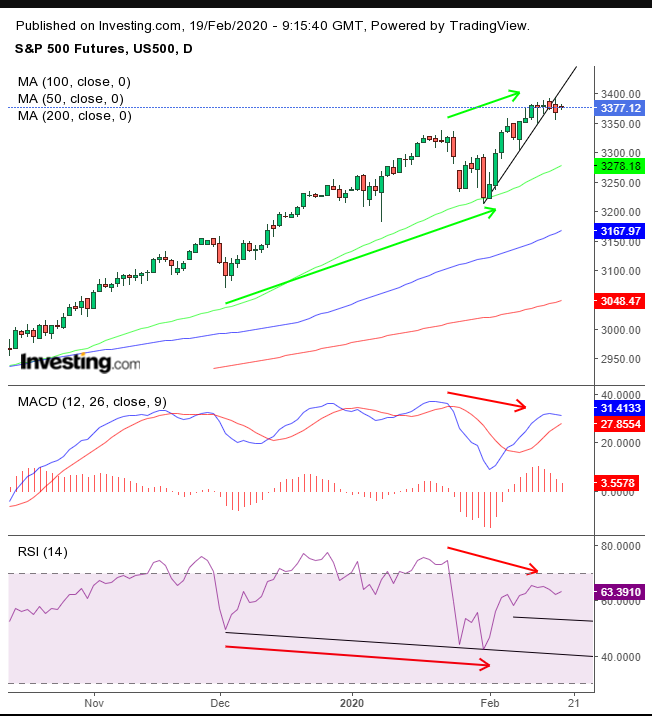Earlier today, expectations began to build around the probability that China would soon be increasing economic stimulus measures. Asian markets along with futures contract, including for the S&P 500 rose.
Can we rely on headline-driven optimism to provide the catalyst for a jump into stocks? Not necessarily.
Note that the S&P 500 Index alternated between gains and losses every single day since last Wednesday’s all-time high for the benchmark. Taking this into consideration would indicate that positive headlines don't necessarily trigger anything more than fleeting exuberance—which hasn’t been helping the market figure out a direction.
Perhaps the technical chart can offer some clarity.

S&P 500 futures fell yesterday, below the most recent uptrend line, since the Jan. 31 low.
At the same time, both the MACD and the RSI provided negative divergences, revealing that the January-to-February peaks were not backed up by a broad price range, nor by momentum. These are bearish indicators.
When this occurs in tandem with the price falling below its uptrend line, investors should pay attention, at least till there's more understanding of the coronavirus' impact and its affect on the chart.
Trading Strategies
Conservative traders would wait for the price to make a new high, followed by a retest of the uptrend line, to keep riding the trend.
Moderate traders may wait for a new high followed by another corrective move for a better entry, not necessarily for trend veracity. Alternatively, they would short if the price fell below 3,350, then failed to rally back above that level.
Aggressive traders may short at will, provided they understand the risks and drew up an appropriate trading plan, one they would stick to.
Trade Sample
- Entry: 3,378
- Stop-Loss: 3,382
- Risk: 4 points
- Target: 3,366
- Reward: 12 points
- Risk:Reward Ratio: 1:3
